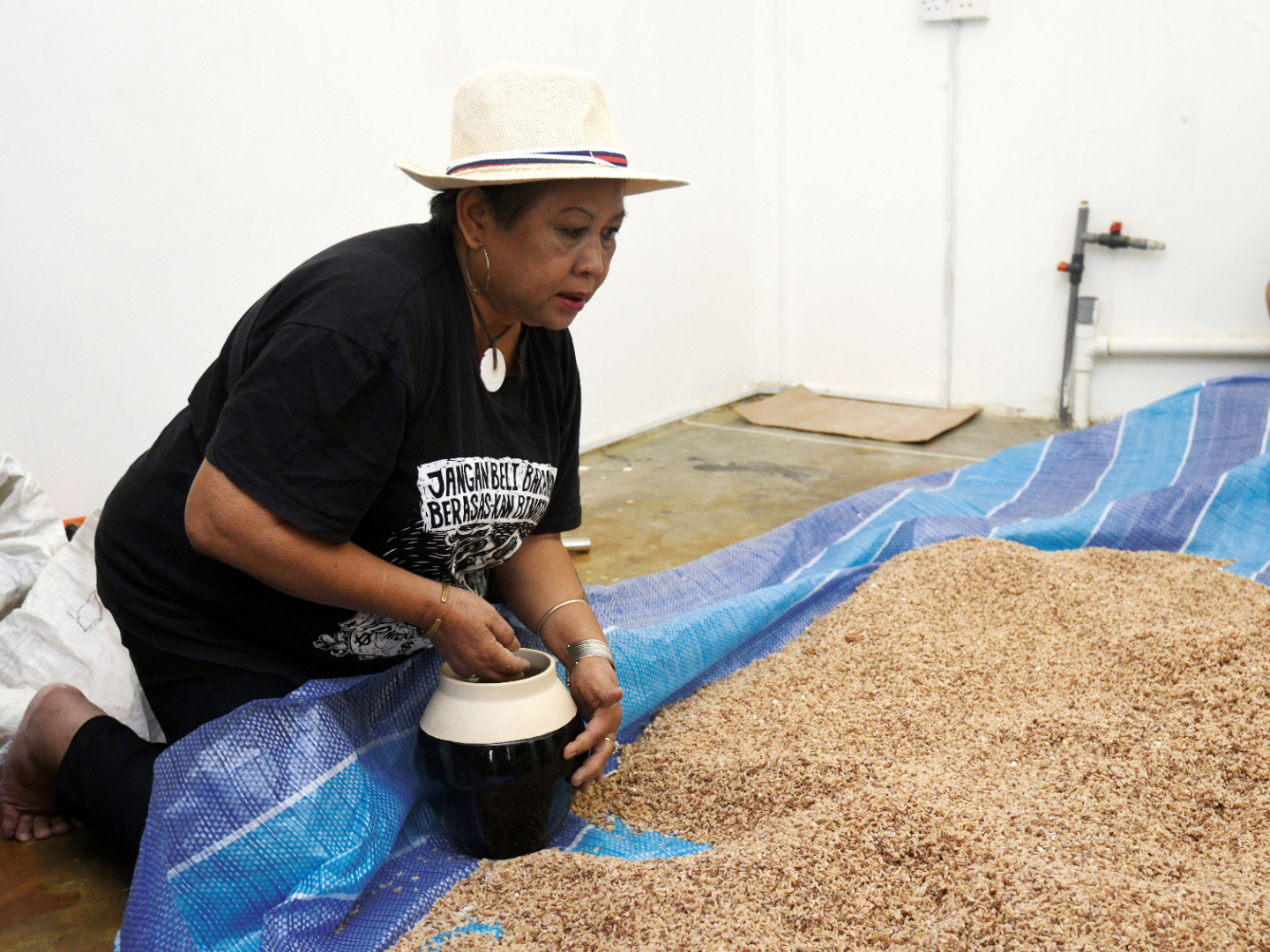
Mama Ita hopes to raise awareness of the cultural significance of tapai and the spiritual qualities and traditional aspects that make it truly special (Photo: Patrick Goh/ The Edge Malaysia)
City dwellers are often ensconced in the hipster bar scene, aware of artisanal gins and special single malts and, in some cases, they become self-proclaimed experts on niche brands and unique spirits. Over the last few years, KLites have also garnered an appreciation for traditional booze, and the rise of readily available Sarawakian rice wine or tuak, and palm wine — more commonly known as toddy — has followed suit. Flavoured renditions, from butterfly pea tuak to pineapple toddy, have also made their way into the mainstream, not to mention the use of these alcohols in trendy cocktails.
Recently, Options had the chance to attend a workshop at The Zhongshan Building to learn how to make tapai — fermented rice wine — under the tutelage of master brewer Christa Mayon Ungkas, affectionately known as (and what she prefers to be called) Mama Ita. Hailing from Keningau, Sabah, she learnt the art of tapai-making from her mother, a methodology that has been passed down for generations.
“I stopped schooling when I was 12 to help my mother earn more income to support my six siblings so they could go to school. I stopped making tapai when I got married and moved to Labuan. In the 1990s, during a massive oil and gas crisis, our family had to move back to Keningau. My husband was retrenched, so we had to go back to farming. I started making tapai again,” our instructor explains.
Mama Ita seems really cool. Dressed in black with a white bandana and silver hoop earrings, she has the sort of smile that immediately puts you at ease. She sports a tattoo of a woman on her forearm, which we had to ask about. “My father had a spiritual ‘friend’. In the peninsula, they’re always called saka. Spiritual beliefs like these are still practised in Sabah. This friend of the family would show herself in a sensual female form. I could easily see them. I don’t practise this belief, but I got this tattoo in memory of my father. He had one just like this,” she says.
Making tapai was never a dream vocation but rather a way to make ends meet.
20230108_peo_tapai_making_workshop_with_mami_ita_pg-26.jpg
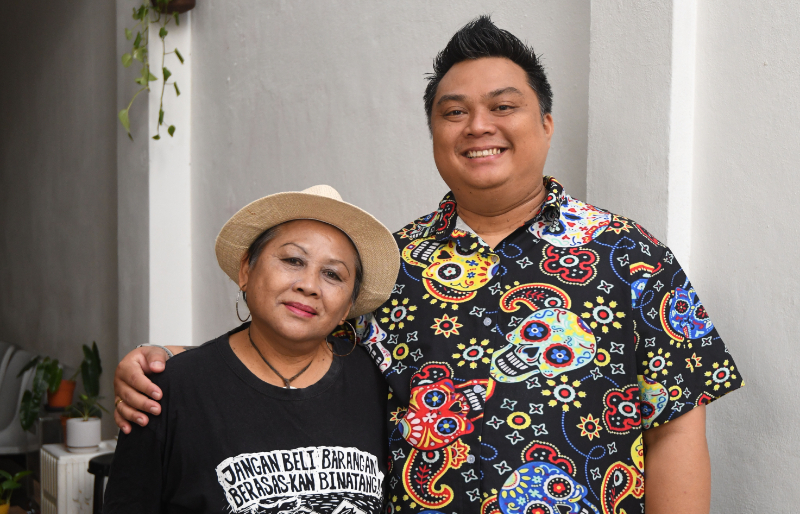
Mama Ita says that when she sees her siblings working in offices and as cashiers, she cannot help comparing herself with them. Still, her knowledge and understanding of the land taught her to have a positive impact on her family and put food on the table. “Because of my experiences in my village, I was appointed village chief. I have always been the ‘head’ of my household, even as the third child.”
The workshop kicked off with an introduction to tapai, but we were also curious about the difference between this particular rice wine and other known varieties. “First is the appearance: tapai and lihing look murky, while tuak is clear. Tapai is made using single polished rice, usually old rice from the langkau rice storage for the Dusun people. Lihing and tuak are made from glutinous rice. For tuak, after sifting, the wine is kept to continue the fermentation and it can take months, even years.” The master brewer adds that while tuak is made by the Iban of Sarawak, tapai and lihing are made by the Kadazan and Dusun.
Very quickly, we learn one of the many tapai-making adat (traditions): those handling the rice must not eat or touch lime or other acidic fruits for at least a month before as it can make the liquid sour. While this is not practical for those of us who are not professional brewers, we were informed that if we had touched spices or spicy or citrusy foods 24 hours prior, we would have to wash our hands with salt water. Tapai-making is a sensitive art and the end product is easily influenced by our hands.
The basic steps are quite straightforward. First, the rice is cooked, then cooled. The laru or yeast is mixed in and left to ferment overnight. The next day, the rice is placed in tajau or ceramic jars and left to age. “In between these simple steps are detailed, traditional practices that have been around since the beginning of the tapai-making culture in Sabah. There are a lot of dos and don’ts in between the steps.”
img_8207_1.jpg
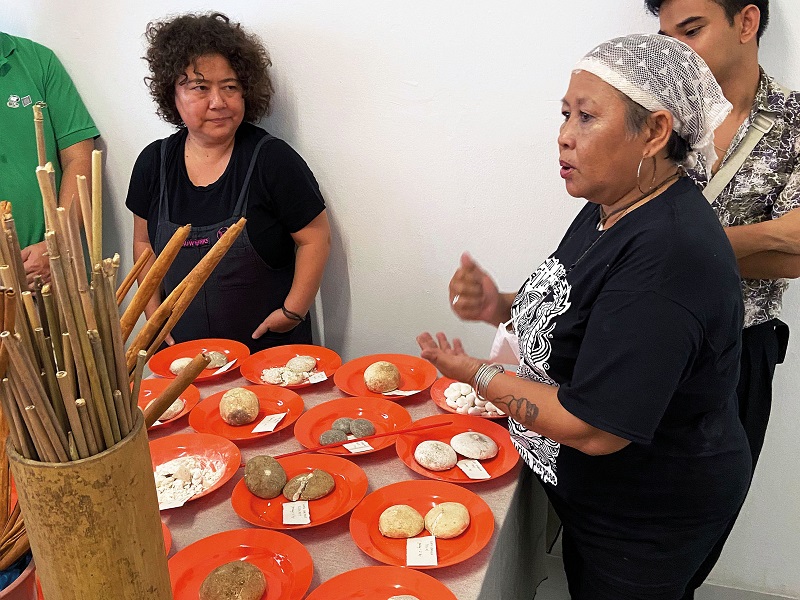
Other than avoiding specific foods, Mama Ita says having a positive mindset is also important for creating the best tapai. “A tapai maker needs to be happy during the process, so when people are drinking it, they will also be as happy as she was when she made it.”
For the workshop, rice is cooked in a massive wok over a flame but traditionally, it would have been done over a wood fire. We are told that making it in a rice cooker at home is also fine but the ratio of water to rice is key — for one cup of rice, use half a cup of water. Tapai makers use an old measuring tool called gantang [equivalent to about 3.6kg, or four cups of rice]. In the wok, 12 gantang of rice (totalling 43.2kg) is cooked in half the amount of water. Tapai is made with single polished rice that has been stored for a year because new rice would be too soft. Large banana leaves are placed on top of the wok to keep the moisture in while the rice cooks.
Tapai-making is quite a spiritual experience, but some of the traditions of this art are dying out. “Sabah, my hometown, has a great drinking culture, especially during harvest seasons. But the lore, myths and legends are slowly being forgotten by the young and also the old. This is mostly because these beliefs were practised in the times of the old religion. Many people have now embraced more popular religions, and the customs of the old are only visited as a remembrance and no longer practised as part of our daily lives. Some see them as trivial; some think they are not relevant anymore,” explains Mama Ita.
As a representative of the Keningau, our teacher hopes to remind people of the old traditions that enrich Sabahan culture. “Making and consuming tapai connects people to their surroundings and the people around them. The idea of tapai itself connects us to Kinoringan, Suminundu, Huminodun and all the gods and goddesses. It connects to the spirit of the rice. Practising the culture of tapai keeps us grounded and close to the land. We appreciate our land and our communities more when we understand the collaborative nature of the tapai.”
tapai.jpg
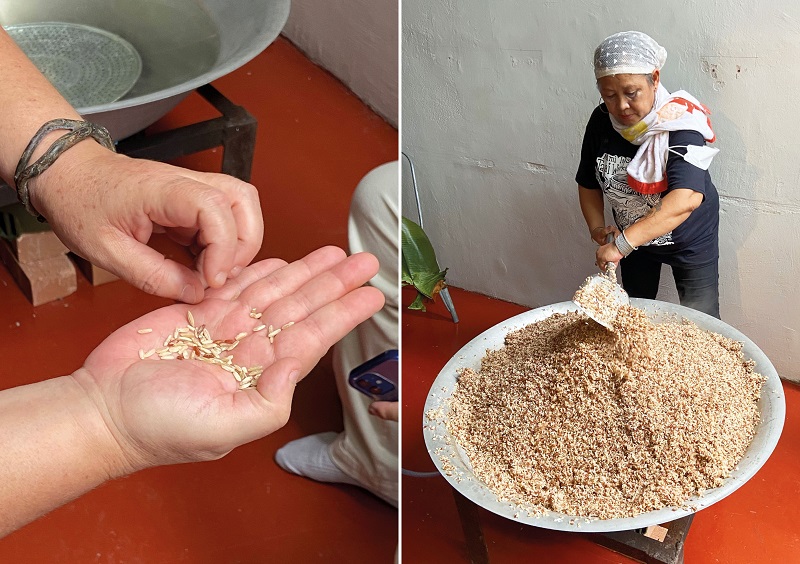
One of the ways in which tapai-making is collaborative involves the yeast, which is called laru or ragi. “Most tapai makers do not make their own yeast; they collaborate with yeast makers. The nature of laru forces the yeast makers to seek solitude most of the time, and so they find it difficult to market the product. Good yeast makers will only make yeast, and tapai makers will only make tapai. They have to collaborate.”
The laru is shaped into round balls, each named after the maker. After the rice is cooked, we all chip in to transfer it onto a large tarp, spreading it out to cool quickly. We are using Laru Ambual (Ros) and for this variety of yeast; two gantang of rice require one piece or ball of laru. Mama Ita whips out a pestle and mortar to grind the ragi into a fine powder, a process that takes some time as she is used to her larger equipment at home.
The powder is then sprinkled over the cooled rice and the workshop participants gather around to massage the rice and sort out the clumps, mixing it all together. This is done while chanting “pahit manis” or bittersweet to encourage the result to taste as it should.
Mama Ita has been running tapai-making workshops since 2019, but this is her first in Kuala Lumpur. It was all her eldest son’s idea. Harold Reagan Eswar, better known as Egn, is a visual artist presenting his third solo show this year. He has also been helping his mother run workshops and express the storytelling aspect of tapai-making. Mama Ita was initially sceptical, unsure if anyone outside of the family would be interested in learning the craft, but she was pleasantly surprised by the response. “I always feel like making tapai is my financial safety net. If everything else fails, I still have this, but I never wanted my children to make a living out of tapai-making. I always feel like this is the last resort. This mindset of mine might change soon.”
20230108_peo_tapai_making_workshop_with_mami_ita_pg-21.jpg

For Egn, the workshops allow him to spend more time with his mother. “I like tapai because it brings me closer to mum. By my 14th birthday, I lived with my grandmother, after that I spent very little time with my mother. As an active visual artist, I’ve realised in recent years that I don’t have much time to document my life and the happenings in my surroundings. When I decided to film mum’s process of tapai-making, I realised this was a good way to immortalise this thing that we have. Our relationship, knowledge, culture, experiences, everything. I like tapai because somehow, it’s the glue that sticks all of this together,” he says.
Once the rice has been thoroughly mixed with the ragi, it is securely wrapped in the tarp like a massive nasi lemak bungkus. Finally, all the tools used, from the bowls and utensils to the charred wood from Mama Ita’s fire in Keningau, are placed on top of the tarp. We are told to return the next day for the next steps, but before adjourning, we sample the tapai brought in from Keningau. We take turns pouring water into the tajau and drinking the bittersweet and fermented liquid using makeshift straws (with small enough holes so the rice does not get sucked up at the same time). When four people share a tajau, each person is supposed to drink more than the last one, and add water when they are done. The murky liquid is surprisingly sweet and very subtly alcoholic.
The next morning, we unwrap the tarp and the rice is warm because of the fermentation. We each grab our own tajau (in some cases, glass bottles with a good seal, as not all of us have readily available ceramic jars) and begin rubbing the inside with fresh papaya leaves to remove any remaining scents or tastes. We then fill the bottles with rice, being careful to press down each layer so that there are no air pockets. Jars get filled to the brim and are then sealed with plastic bags that are tied with raffia strings. The last step is to let the rice do its thing for a couple of weeks. While tapai can be left to ferment for as long as you like, after some months the alcohol level drops, making it more suitable for medicinal purposes.
20230108_peo_tapai_making_workshop_with_mami_ita_pg-23_1.jpg
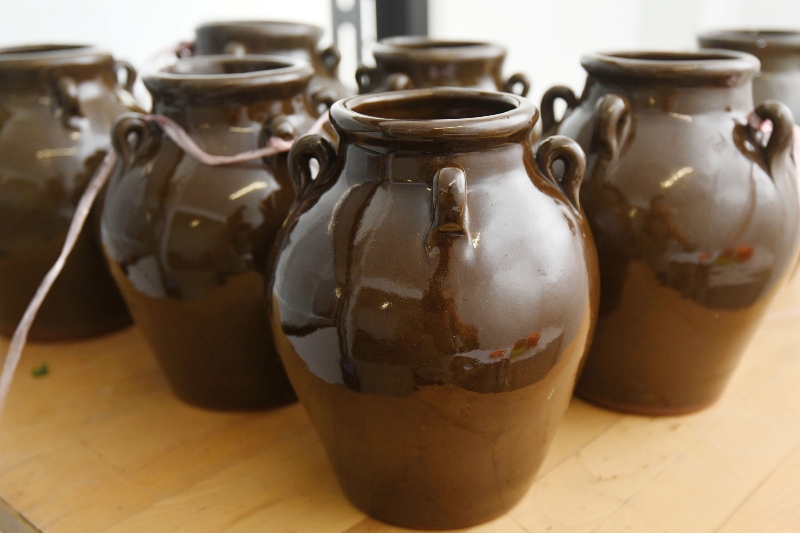
“I want people to know how tapai is a thing of culture, not just leisure,” says Mama Ita. “A lot of people in Sabah blame it for their shortcomings or mistakes. Issues like domestic violence are always linked to drunkenness, and ultimately, this and other forms of alcoholic beverages get a bad rep. People need to know their limits and control their consumption. They need to drink responsibly, and with tapai, with all its spirituality, it needs to be respected, not drunk without purpose.”
With the help of Egn, Mama Ita intends to conduct more workshops. She hopes to raise awareness of the cultural significance of the spirit and the spiritual qualities and traditional aspects that make it truly special. “I want to teach more people. I am sure most of the participants join my workshop for their own reasons. I just hope one of them will consider taking tapai-making to the next level, whatever that may be. I want to see tapai-making and tapai-related products be a thing in the future, to be commercialised but at the same time retain its dignity.”
This article first appeared on Jan 23, 2023 in The Edge Malaysia.


